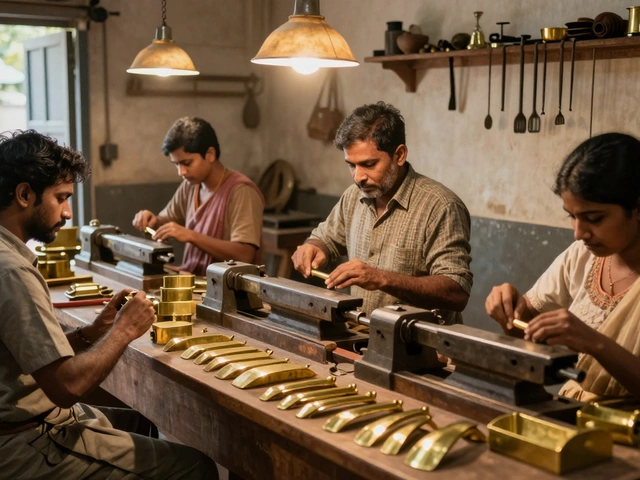Starting a Small Factory: Your Quick‑Start Guide
Thinking about turning a garage idea into a real factory? You don’t need a giant campus or millions of rupees. With the right plan, you can set up a small production unit in a few months and start selling.
Map Out the Basics First
Begin with a clear product idea. Pick something that solves a problem you’ve seen, like a simple plastic part, a specialty food item, or a basic metal component. Write down what the product is, who will buy it, and why it’s better than what’s already out there. This short sheet becomes your reference when you talk to suppliers or banks.
Next, do a rough cost check. List out raw material prices, machine rent or purchase, labor wages, electricity, and any permits. A spreadsheet with a column for one‑month costs and another for the first three months helps you see cash flow gaps. Most new factories need anywhere from ₹5‑10 lakh for a tiny setup, but you’ll know the exact number once you’ve listed everything.
Choose the Right Spot
Location matters, but you don’t have to be in a prime industrial zone. Look for a place with decent road access, cheap electricity, and a labor pool you can tap. Many small units start in semi‑urban areas where land is cheaper and local governments offer incentives.
Check zoning rules before you sign a lease. A quick call to the local municipal office can tell you if manufacturing is allowed on the plot. Getting the clearance early saves you headaches later.
Take Care of Legal Stuff
Register your business as a Proprietorship, Partnership, LLP, or Private Ltd. depending on how many people are involved and how much liability you’re comfortable with. Apply for a GST registration, factory license, and any specific approvals for your product (for example, food safety certificates if you’re making snacks).
Don’t forget labor laws. Even if you hire only two workers, you need to provide basic contracts, EPF contributions, and a safe working environment. A tidy compliance checklist keeps you from fines down the road.
Pick Simple, Scalable Equipment
For a small factory, avoid big, custom machines. Look for second‑hand equipment that fits your production volume. A basic CNC router, a small injection molding unit, or a simple mixing tank can cost a fraction of brand‑new gear and still deliver good quality.
Buy from local dealers who offer service contracts. If a machine breaks, you’ll get it fixed fast and keep production humming.
Build a Small, Skilled Team
Hire people who already know the basics of your process. A skilled operator can often train a junior worker on the job, saving you training costs. Offer a modest salary plus a small performance bonus – that keeps morale up without blowing the budget.
Invest a few days in safety training. Simple habits like wearing goggles, keeping aisles clear, and turning off machines before maintenance prevent accidents and downtime.
Kick‑Start Production and Test the Market
Start with a pilot batch. Produce enough to get feedback from a few customers, but not so much that you’re stuck with unsold inventory. Use that feedback to tweak design, packaging, or pricing.
Leverage online marketplaces, local distributors, and direct sales to friends and family. A low‑cost website or a simple social media page can showcase your product and generate orders quickly.
Plan for Growth
Track every cost and every sale in a spreadsheet. When you see a steady increase in orders, think about adding one more machine or extending work hours. Small upgrades keep cash flow positive and avoid over‑expansion.
Watch for government schemes that support small manufacturers – many offer subsidies for energy‑efficient machines or export assistance. Applying early can give you a financial boost when you need it.
Starting a small factory is doable if you break it into bite‑size steps: define the product, budget wisely, pick a sensible location, stay legal, get the right tools, hire a capable crew, and test the market fast. Follow these basics, stay flexible, and you’ll see your little unit turn into a steady income source.
Step-by-Step Guide to Launching a Small Scale Industry Successfully
Discover how to set up a small scale industry, from choosing the right product to licenses and growth tips. Get practical advice for a successful start.
Read More




